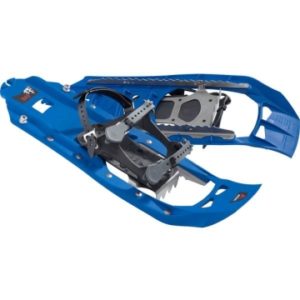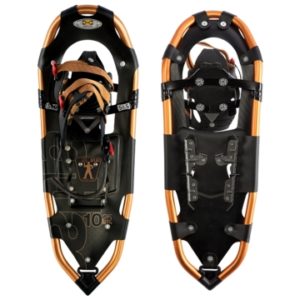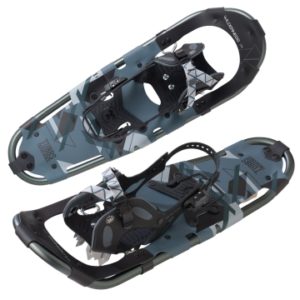Looking to buy your first snowshoes? One that’s good enough to walk down the trails in your local cross country resort and forest service area? You don’t need pricey snowshoes for that. One of these budget snowshoes will do.
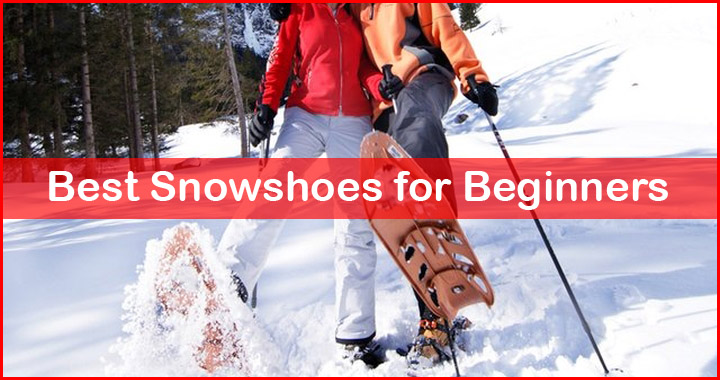
If you’re new to snowshoeing, the chance is you won’t go break off the trails and make your own way to explore the backcountry terrain. Instead, you’re more interested to wander off the groomed trails around a cross-country resort or a national park. Maybe with a few friends and family too. Am I right? In that case, you won’t be needing backcountry snowshoes. You can put on some inexpensive recreational snowshoes, and have a nice refreshing trip just fine. In this post, we’re going to talk about a few snowshoes that have the best value for novices and the reason why we like them. For more info on choosing the best snowshoes, you can check out our comprehensive snowshoe buying guide.
Best Beginner Snowshoes
| Snowshoes | Size | Heel Crampons | Bindings | Price |
|---|---|---|---|---|
| MSR Evo | 22-inch | No | Full Rotation | $ |
| Atlas 10 Series Snowshoes | 25", 30", 35" | Yes | Fixed Rotation | $$ |
| Tubbs Wilderness | 22", 25", 30" | Yes | Full Rotation | $$ |
Covering flat terrain and some moderate rolling hills hardly needs a pair of full-blown backcountry snowshoes. Although they’re much better when it comes to flotation, traction, and security, on-trail snowshoeing around the forest service areas doesn’t really demand that much. Several recreational models like MSR Evo and Atlas 10 Series perform pretty well on beginner terrains. They grip hard on packed and groomed snow, are lightweight and easy to take on and off. Besides, they’re far more affordable too which is often a good point if you’re just picking up snowshoeing.
MSR Evo
What’s Hot: Affordable, lightweight, versatile, good traction, user-friendly bindings
What’s Not: Available only in one size
Best Applications: Beginner trails, groomed/packed snow, intermediate slopes, soft snow
MSR Evo 22 is the best snowshoe in its price range. Seriously, you won’t find any snowshoe that performs the same as well for less than 150 bucks. They sport a rather modern design that excludes the need for common tubular frames, making them lighter than typical snowshoes. However, since the entire decks are made of plastic, expect to catch a bit of racket as the snowshoes hit against packed snow. In terms of traction, MSR Evo 22 is also the best in its class, sporting a grippy instep crampon coupled with toothy side rails and brake bars that are molded under the heel areas. You should be able to walk without slipping on any rolling terrains.
MSR Evo DuoFit bindings with conventional buckle-in mechanism are quite easy to set, but if you’re wearing mittens, you’re going to need to take them off first. They stay secured too even under freezing temperatures. You must like them if you’re a big guy because they accommodate any boots up to size 15; that’s something that doesn’t come with any recreational snowshoe. Anyway, this snowshoe is only available in one size (i.e. 22-inch). Although it’s less cumbersome and offers great maneuverability on groomed trails, this pair of snowshoes won’t keep you “floating” on deep snow. You will need the add-on tails (sold separately) to extend its footprint and enhance its flotation.
Shop now at Amazon.comAtlas 10 Series
What’s Hot: Nimble on hardpack, lightweight, secure, good traction for flat to rolling terrain
What’s Not: Difficult bindings, not enough flotation for deep snow
Best Applications: Hardpack, groomed trails, rolling hills, intermediate terrain
Another snowshoe that has made its own name among winter backpackers and hikers is Atlas 10 Series. It’s available in many size options with the smallest being 25-inch long while the largest is 35-inch long. If you have no idea which size is for you, take this rule of thumb: the more weight you carry or the drier and deeper the snow is, the larger your snowshoes should be. Unlike MSR Evo, it comes with metal frames that are integrated with Nytex nylon decks. It’s a tad heavier but got better durability to make up for that. The frame design is unique too; V-Frames as they call it. In a nutshell, these frames have tapered tails that don’t drag snow as you walk, enabling you to step more efficiently.
The traction systems on Atlas 10 Series rely on a set of under-toe crampons and heel crampons. The latter is designed in a particular way that it grips the snow both when you’re on vertical slopes and making traverses. It’s not nearly as aggressive as advanced backcountry snowshoes, but it keeps you standing on any rolling hills. Now on to the bindings. While I like how they stay secured and tight, I’m not very keen on the loose top of the webbing straps. They can easily catch on things on the trails like tree branches. They’re also not the easiest snowshoe bindings. You will probably need to remove your gloves as you’re tightening the straps.
Shop now at Amazon.comTubbs Wilderness
What’s Hot: Easy-to-use bindings, comfortable for traveling with a loaded pack
What’s Not: Heavy, decking material seems cheap, stiff for hardpacked snow
Best Applications: Winter backpacking, beginner trails, moderate backcountry
Next on the list of best snowshoes for beginners is Tubbs Wilderness. It’s one of the most stable snowshoes for winter hiking and backpacking. Thanks to its rugged construction as well as reliable traction systems. The carbon steel crampons under the balls of your feet are not very toothy, but they grip tight on snowpack. The heel crampons, on the other hand, don’t offer much traction on a downhill trip, but they’re very helpful on traversing side slopes. You’re going to like them when you carry quite some weight in your backpack. They’re stable and remain strong with each strike against the packed snow.
Another aspect where Tubbs Wilderness excels is the bindings. They may look a bit more complex and not so convincing but rest assured, they’re very easy to set. Just pull the strap that goes zigzag over your arch, and secure it with the ratchet buckle. Simple as that! And since they come with large padding, they’re more convenient too. Anyway, there’s a “toe cord” that connects the bindings with the decks and unlike Atlas snowshoes, they rotate freely with each step. The good thing about it is, it allows for wider range motion as you walk, allowing you to stride without any refrain. The drawback is you won’t be able to move fast, and it can be very awkward if you have to step over some obstacles like logs or big rocks.
Shop now at Amazon.comOther Well Performing Snowshoes for Beginner
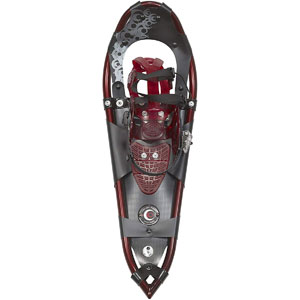
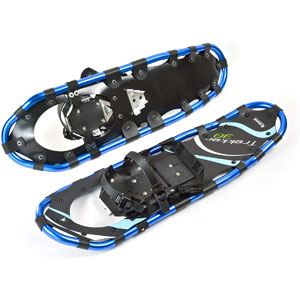
Aside from those three, there are still a couple of snowshoes that are great for recreational applications: Crescent Moon Gold 9 and Chinook Trekker Snowshoes. The former is quite expensive. Unless you’re okay shelling out over $200 bucks for recreational snowshoes, I think you’d have better going with the three snowshoes mentioned above. Chinook Trekker Snowshoes are far more affordable, but we’re not keen on the fact that its crampons are made of aluminum, instead of stainless steel. Either way, all we want to say is they’re both worth a look. They work well as beginner snowshoes, but there are better ones out there.

